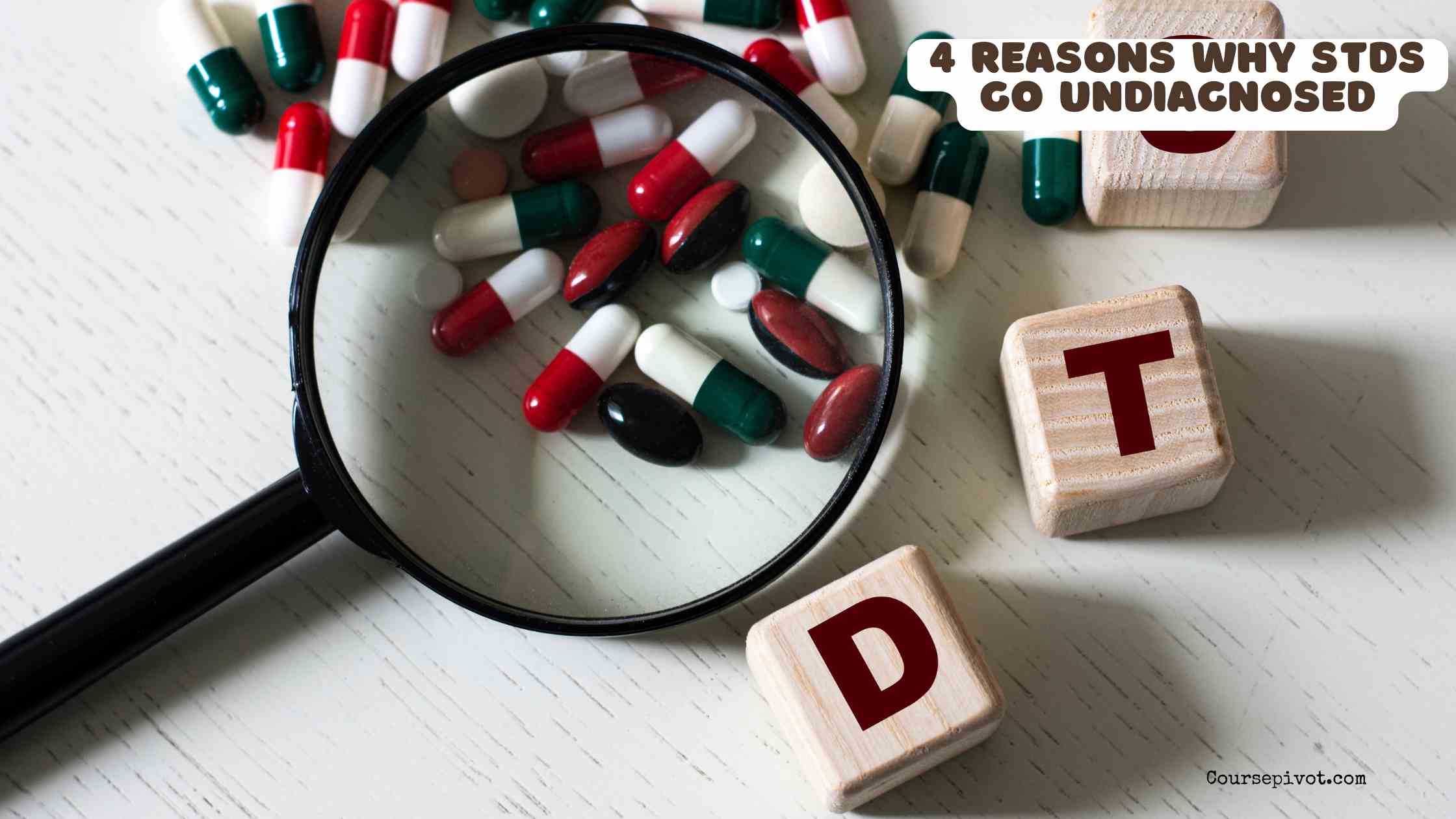
4 Reasons Why STDs Go Undiagnosed
Have you ever pondered why sexually transmitted diseases (STDs) frequently evade detection despite modern medical advancements? It’s a pressing issue that affects millions worldwide, leading to untreated infections and heightened transmission risks. This blog delves into four primary reasons why STDs go undiagnosed, exploring the underlying factors with detailed insights, supported by data and examples. Understanding these barriers can empower individuals to prioritize testing and contribute to broader public health improvements.
Table of Contents
1. Lack of Symptoms or Silent Infections
One of the most common reasons STDs remain undiagnosed is their ability to manifest without obvious symptoms. Infections such as chlamydia, gonorrhea, and certain strains of HPV can linger asymptomatically for months or even years. According to the Centers for Disease Control and Prevention (CDC), approximately 70% of chlamydia cases in women and 50% in men show no signs, per recent health statistics.
This silence allows the disease to progress unnoticed, potentially causing long-term complications like pelvic inflammatory disease or infertility. For instance, a young adult might engage in unprotected sex, contract chlamydia, and unknowingly pass it to partners without any discomfort prompting a checkup. Regular screenings, especially for those in high-risk groups, are essential to uncover these hidden infections before they escalate.
Without proactive testing, the cycle of transmission continues unabated. Health experts recommend annual STD panels for sexually active individuals under 25, as early detection can prevent severe outcomes.
2. Stigma and Social Barriers
Societal stigma surrounding STDs creates a significant hurdle, deterring people from seeking diagnosis or even discussing their sexual health. The fear of being labeled promiscuous or facing discrimination can lead to avoidance of medical services. Public health surveys indicate that 60% of young adults aged 18-24 cite embarrassment or stigma as a reason for not getting tested, according to studies from organizations like Planned Parenthood.
This barrier is particularly pronounced in conservative communities or among marginalized groups, where cultural norms amplify shame. Take, for example, a college student who suspects an infection but worries about rumors spreading in their social circle, opting instead to ignore the issue. Overcoming stigma requires education campaigns that normalize STD testing as a routine part of healthcare, similar to annual physicals.
Healthcare providers can foster inclusive environments by offering confidential services and non-judgmental counseling. By reducing stigma, more individuals might feel empowered to get tested, ultimately curbing the spread of STDs.
3. Limited Access to Healthcare and Testing
Access to quality healthcare isn’t equitable, leaving many without convenient or affordable STD testing options. In rural areas or low-income communities, clinics may be scarce, and transportation issues compound the problem. The World Health Organization (WHO) reports that 25% of the global population struggles with access to essential health services, including sexual health screenings, contributing to higher rates of undiagnosed STDs.
Financial barriers, such as high out-of-pocket costs or lack of insurance, further exacerbate the issue. Consider a scenario where a part-time worker without health coverage skips testing due to expenses, allowing an infection like syphilis to advance to secondary stages. Solutions include expanding free community clinics, mobile testing units, and subsidized programs to make services more reachable.
Telehealth has emerged as a game-changer, enabling remote consultations and at-home testing kits. Policymakers should prioritize funding for these initiatives to ensure no one is left behind in STD prevention efforts.
4. Insufficient Awareness or Education
A lack of comprehensive sexual health education leaves many unaware of STD risks, symptoms, and the necessity of regular testing. Misinformation or incomplete knowledge often stems from inadequate school curricula or reliance on unreliable sources. Health education research reveals that 40% of sexually active adults are unfamiliar with standard STD screening recommendations, per findings from the American Sexual Health Association.
This gap in awareness means people might not recognize subtle signs or understand asymptomatic risks. For example, someone might dismiss mild genital discomfort as unrelated, delaying diagnosis of herpes or other conditions. Enhancing education through schools, online resources, and public campaigns can bridge this divide, emphasizing that anyone sexually active is at risk.
Promoting accurate information via social media and community workshops can increase testing rates. When individuals are informed, they’re more likely to take proactive steps, reducing the overall burden of undiagnosed STDs.
Why It Matters
Undiagnosed STDs pose serious threats beyond individual health, including increased transmission, antibiotic resistance, and long-term complications like cancer or neurological damage. Addressing these reasons matters because it safeguards communities, reduces healthcare costs, and promotes equity in access to care. By tackling silent infections, stigma, access issues, and education gaps, we can foster a healthier society where STDs are detected and treated promptly.
This awareness connects directly to everyday lives, encouraging responsible behaviors that protect partners and future generations. Public health relies on collective action to minimize the impact of these often preventable conditions.
Practical Tips for Addressing Undiagnosed STDs
- Schedule Routine Screenings: Make annual or bi-annual STD tests a habit, regardless of symptoms, to catch infections early—consult guidelines from the CDC for your age and risk level.
- Utilize Confidential Resources: Opt for anonymous testing sites or apps that deliver at-home kits to alleviate privacy concerns and stigma.
- Educate and Communicate: Read up on STDs from credible sources and discuss testing with partners to normalize the conversation and encourage mutual responsibility.
- Advocate for Better Access: Support local health policies or organizations that provide free testing, and consider telehealth for convenient consultations.
- Monitor Your Health: Track any unusual changes in your body and seek medical advice promptly, even if symptoms seem minor.
Key Takeaways
The four main reasons STDs go undiagnosed—lack of symptoms, stigma, limited access, and insufficient education—highlight systemic and personal challenges that perpetuate infections. Each factor contributes to delayed detection, underscoring the need for regular screenings and informed decision-making to mitigate risks.
Read our article on 20 Reasons to Thank God
By implementing practical tips like routine testing and advocating for accessible services, individuals can play a role in breaking the cycle. Ultimately, greater awareness and action lead to earlier diagnoses, better health outcomes, and a reduction in the global STD epidemic.
Cite this article
You can copy and paste your preferred citation format below.
Martin, L. & Arquette, E.. (2025, July 29). 4 Reasons Why STDs Go Undiagnosed. Coursepivot.com. https://coursepivot.com/blog/4-reasons-why-stds-go-undiagnosed/



